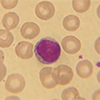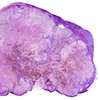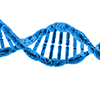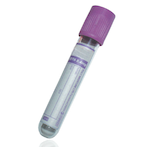Renin
Specimen Volume
Min 0.5 mLSample Preparation
Samples should be transported to the lab at room temperature and received same day.
Turnaround Time
5 working daysSample Processing In Laboratory
Samples need to be centrifuged within 24 hours of collection. The plasma should then be separated and stored at -20°C immediately after centrifugation. Samples must not be stored in the fridge at any point.General Information
Renin is produced in two forms, pro-renin and renin. Pro-renin is converted to renin by proteolysis of 43 amino acids. This conversion is thought not to occur in vivo but can occur in vitro due to incorrect sample handling procedures. Renin is stored in granules ready for release.
Renin is commonly measured during the assessment of patients with essential hypertension (Conn’s syndrome/10 hyperaldosteronism), in patients with renal artery stenosis and as a monitor of treatment compliance in patients with congenital adrenal hyperplasia. This is not an exhaustive list. As with aldosterone measurements, renin measurement is affected by salt intake, posture and medication.
Simultaneous measurement of aldosterone and renin allows the calculation of the aldosterone: renin ratio. This is used by some clinicians to diagnose primary hyperaldosteronism and forms the basis of the current Endocrine Society Clinical Practice guidelines for diagnosis of primary hyperaldosteronism. The diagnostic cut-off used can vary between centres and will depend on the methods used for the measurement of both aldosterone and renin.
Patient Preparation
Ideally a full drug history and the patient’s sodium and potassium status should be supplied by the requestor. Some common drugs and their effects on the renin-angiotensin system are listed below. Often patients who are having Renin measured are on a combination of drugs to try to control their resistant hypertension. As such it is not always possible to stop certain drugs before taking the blood sample. Advice with regard to drug therapy should be sought from the relevant Endocrinologist. As a minimum spironolactone, eplerenone, amiloride, triamterene, potassium-wasting diuretics and products derived from liquorice root should be stopped for 4 weeks prior to sample being taken2
There are several drugs that may cause changes in the renin-aldosterone-angiotensin pathway and may affect the interpretation of results. The table below lists the in vivo effects that some drugs will have on levels of Aldosterone and Renin. The list is not exhaustive.
|
Drug group |
Effect on Renin |
Effect on Aldosterone |
Comments |
|
NSAIDS |
↓ |
↓ |
|
|
β-blockers |
↓ |
↓ |
|
|
K+ sparing diuretics |
↑ |
↑ |
Very large increases in Renin |
|
ACE inhibitors |
↑ |
↓ |
Effects on Aldosterone not always seen. |
|
Thiazide diuretics |
↑ |
↑ |
Variable effect on Aldosterone |
|
Loop diuretics |
↑ |
↑↓ |
Only small changes |
|
Calcium channel antagonists |
Any |
Any |
Very variable effects |
|
Laxatives |
↑ |
↑ |
|
- http://mrcp1and2.blogspot.com/2010/12/hypokalemia-and-hypertension.html.Last accessed 31.10.11.
- Funder JW, Carey RM, Fardella C et al. The Endocrine Society Clinical Practice guidelines for case detection, diagnosis and treatment of patients with primary aldosteronism. J Clin Endocrinol and Metab 2008; 93(9): 3266-3281.
- O’Shea et al (2016). Establishment of reference intervals for aldosterone and renin in a Caucasian population using the newly developed Immunodiagnostic Systems specialty immunoassay automated system. Annals of Clinical Biochemistry 2016, Vol. 53(3) 390–398.
Notes
Haemolysed and lipaemic samples are unsuitable for analysis. Freezing and thawing of plasma samples should be avoided.
Please contact laboratory for more information if required.
Reference Range
From 1/3/18 renin samples are analysed using the IDS iSYS direct renin mass immunoassay which will use the following reference ranges:
Ambulatory: Female: 6.1 – 62.7 mIU/L, Male: 9.0 – 103 mIU/L
Supine: 4.2 – 59.7 mIU/L
Screen positive for Conns: Aldosterone/renin ratio >91pmol/mU + aldosterone >750 pmol/L
(Endocrine guidelines on the investigation of Conns https://doi.org/10.1210/jc.2015-4061)
The Aldosterone/Renin ratio cut-off that we are providing is a guide only and not a diagnostic test and the ratio should be interpreted, cautiously, in conjunction with relevant clinical information and medications that may affect the ratio.
Source of Reference Range
O'Shea et al, 2016Specifications
- EQA Status: Biorad
- EQAS Scheme: Yes








